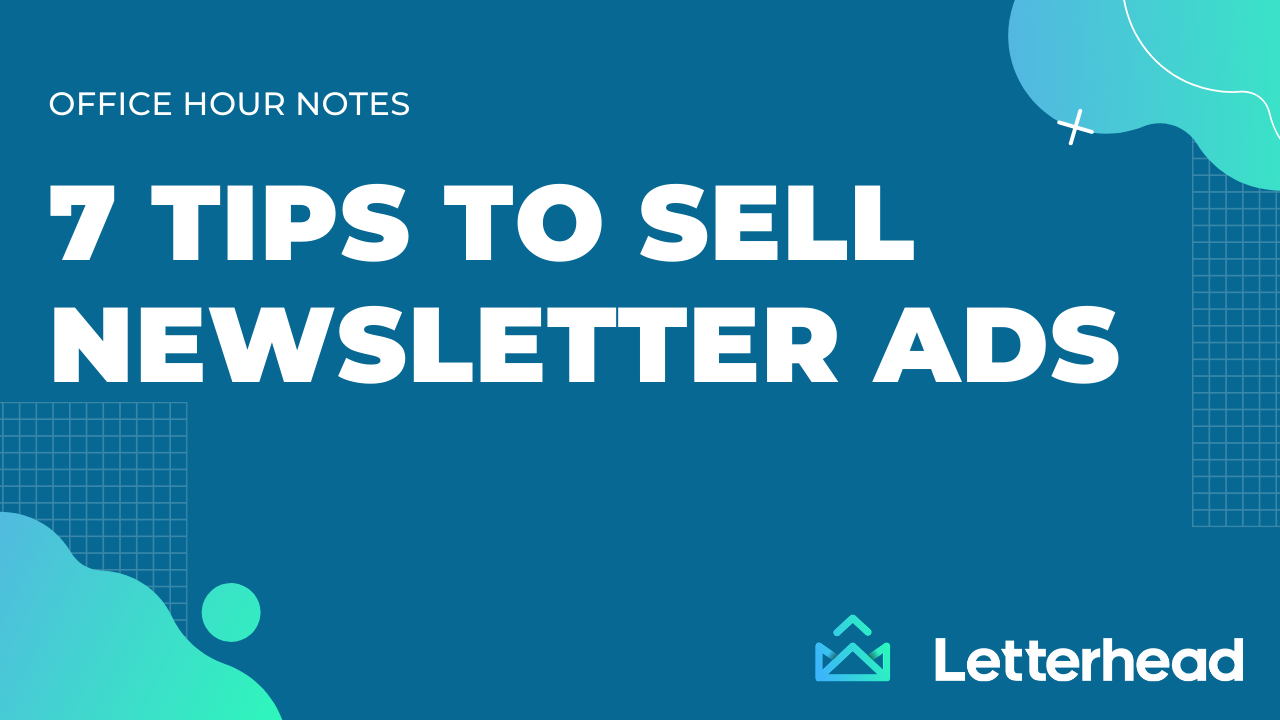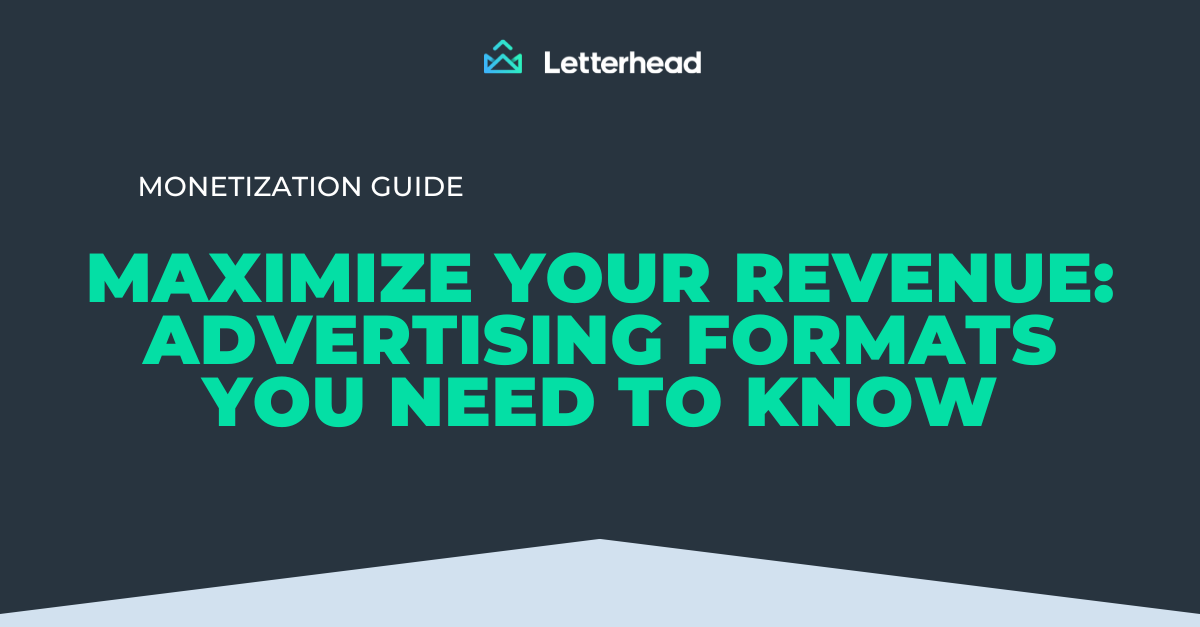Unlocking the Secrets of Successful Newsletter Ad Sales
Ready to monetize your email newsletters? Download our complimentary guide for publishers and learn 4 critical strategies to grow your program and generate results.
Monetizing your email newsletters can feel overwhelming with all the acronyms, metrics, technologies, and trends. But at its core, newsletter monetization is simple: you have the attention of valuable people, and advertisers want a piece of it.
However, it's easy to fall into reductive thinking regarding monetization. You might see things as simple math problems or an extension of your website inventory. But if you want to maximize your revenue potential, you need to treat your newsletters as the unique products they are. This means developing checklists and sales strategies that reflect your newsletters' uniqueness and leveraging them for the best rates, reader experience, and advertiser results.
At Letterhead, we've helped publishers sell self-service and managed advertising inventory in email newsletters. Based on our experience, here are a few fundamental principles to keep in mind:
Know your audience:
The more you understand your readers, the better you can tailor your ad inventory and pricing (including increased rates). This includes demographic information, interests, and behaviors on the most basic level. For instance, if your newsletter targets tech industry C-suite executives, you should focus on ads that appeal to that audience and set appropriate rates. However, if your newsletter caters to a broader audience, you should consider a variety of ad units and be open to adjusting rates based on the specific needs of your advertisers.
Knowing your audience is not just about data; it's also about storytelling. Showcasing your community's unique traits and interests can help potential advertisers understand the value they can bring to your readers. By highlighting what makes your audience tick, what resonates with them, and what drives engagement, you can paint a vivid picture for advertisers on how they can effectively connect with your readers.
Define your ad units:
When deciding on ad formats for your newsletter, consider which ones will be most effective for your audience. Some popular options include banner ads, sponsored content, and product placements. Consider integrating ads through sponsored content or product placements if your newsletter is text-based. But banner ads might be a better fit if your newsletter includes images or videos.
But it's not just about choosing the ad format; it's about making a clear value proposition to advertisers. Be intentional about why and where you want the ad to appear in your newsletter. Define the purpose and goals of each ad unit. For example, you could have "event listing" as an ad unit specifically for promoting events vs. just calling it "a text only ad spot" By clearly defining the purpose of the ad, you create a more attractive and valuable opportunity for advertisers.
Set your rates:
Consider your audience, ad inventory, and market competition when setting your newsletter's ad rates. Opt for a number that maximizes revenue potential while not scaring off advertisers. It's okay if you don't get it right on the first try; use trial and error to find the sweet spot. If you're concerned about underpricing, consider limiting supply or offering a limited promotion before increasing rates. Remember, pricing is a continual process of refinement.
Test and adjust:
Same with the rates, be ready to boldly iterate with different ad units and pricing to see what works best. Keep track of your results and make adjustments as needed. For example, if you notice banner ads performing poorly, try testing sponsored content or product placements instead. Similarly, if your rates are too high or too low, you may want to adjust them based on feedback.
Invest in ad quality:
There are better ways than maximizing your ad revenue by cramming as many ads as possible into your newsletter. Instead, focus on offering high-quality, well-designed ad units that blend seamlessly into the overall aesthetic of your newsletter. This shows your readers and potential advertisers that you value the quality of their experience and understand the importance of integrating ads in a meaningful way. Give your ad units a creative touch by giving them engaging names and designing them to fit the themes of your newsletter. This shows that you care about the quality of your advertising inventory and can offer potential advertisers a unique and valuable experience.
Example: In an entrepreneurship-focused newsletter, consider the potential appeal of these two scenarios.
- Offer a "banner ad" promotion that states your image will appear in the newsletter.
- Naming the ad unit "Entrepreneur Spotlight Sponsorship" where they can be the banner ad above this recurring section in your newsletter.
Being able to help frame it helps the advertiser not only understand this is aligned with their own goals, but they can mentally picture your promotion and where it will be within the content. Remember, no advertiser likes surprises.
Foster relationships with advertisers:
Maximizing your revenue potential and developing a successful newsletter monetization strategy starts with building strong relationships with advertisers. This includes being responsive to their needs, providing performance reports, and working with them to optimize their campaigns. To attract and retain top-quality advertisers, establish trust and showcase your value as a partner.
By keeping the customer's success at the forefront and offering valuable, expert advice, you can create an outcome-focused strategy that adds value to their business and enhances your revenue potential. Make your newsletter unique and leverage its strengths to stand out in the market.
👉 Want more? Get our complimentary guide for content publishers & marketers covers 4 critical strategies you should use to grow your newsletter program and generate results.


